Cuckoo, Koekoek, Kuckuck, Cuco Canoro, Cuco Común
Spotted on our property Monte Horizonte in the Alentejo region of Portugal today. Cuckoo sound
The Common Cuckoo (Cuculus canorus) (formerly European Cuckoo) is a member of the cuckoo order of birds, Cuculiformes, which includes the roadrunners, the anis and the coucals.
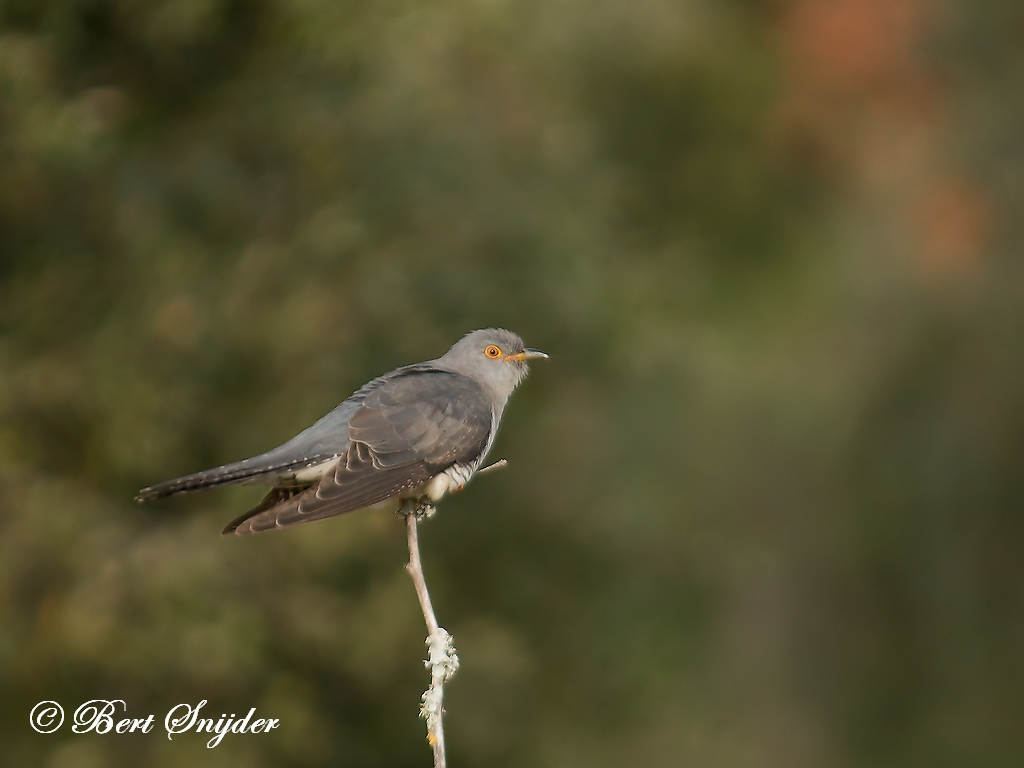
More photos at the bottom of this page:
This species is a widespread summer migrant to Europe and Asia, and winters in Africa. It is a brood parasite, which means it lays eggs in the nests of other bird species, particularly of Dunnocks, Meadow Pipits, and Eurasian Reed Warblers.
The Common Cuckoo (formerly European Cuckoo) is a member of the cuckoo order of birds, the Cuculiformes, which also includes the roadrunners, the anis and the coucals.[1] The species’ binomial name is derived from the Latin cuculus (the cuckoo) and canorus (melodious; from canere, meaning to sing).[2] The cuckoo family gets its common name and genus name by onomatopoeia for the call of the male Common Cuckoo.[3] The English word “cuckoo” comes from the Old French cucu and it first appears about 1240[4] in the poem Sumer Is Icumen In – “Summer has come in / Loudly sing, Cuckoo!” in modern English.
Although the Common Cuckoo’s global population appears to be declining, it is classified of being of Least Concern by the International Union for Conservation of Nature. It is estimated that the species numbers between 25 million and 100 million individuals worldwide, with around 12.6 million to 25.8 million of those birds breeding in Europe. The maximum recorded lifespan of a Common Cuckoo in the United Kingdom is 6 years, 11 months and 2 days.
The Common Cuckoo is 32–34 centimetres (13–13 in) long from bill to tail (with a tail of 13–15 centimetres (5.1–5.9 in) and a wingspan of 55–60 centimetres (22–24 in). The legs are short. It is greyish with a slender body and long tail and can be mistaken for a falcon in flight, where the wingbeats are regular. During the breeding season, Common Cuckoos often settle on an open perch with drooped wings and raised tail. There is a rufous colour morph, which occurs occasionally in adult females but more often in juveniles.
All adult males are slate-grey; the grey throat extends well down the bird’s breast with a sharp demarcation to the barred underparts. The iris, orbital ring, the base of the bill and feet are yellow. Grey adult females have a pinkish-buff or buff background to the barring and neck sides, and sometimes small rufous spots on the median and greater coverts and the outer webs of the secondary feathers.
Rufous morph adult females have reddish-brown upperparts with dark grey or black bars. The black upperpart bars are narrower than the rufous bars, as opposed to rufous juvenile birds, where the black bars are broader.
The male’s call, goo-ko, is usually given from an open perch. During the breeding season the male typically gives this call with intervals of 1–1.5 seconds, in groups of 10–20 with a rest of a few seconds between groups. The female has a loud bubbling call. The song starts as a descending minor third early in the year in April, and the interval gets wider, through a major third to a fourth as the season progresses, and in June the cuckoo “forgets its tune” and may make other calls such as ascending intervals. Also the cuckoo seems to have a form of absolute pitch as it tends to sing in the key of C.
Essentially a bird of open land, the Common Cuckoo is a widespread summer migrant to Europe and Asia, and winters in Africa. Birds arrive in Europe in April and leave in September.
The Common Cuckoo has also occurred as a vagrant in countries including Barbados, the United States of America, Greenland, the Faroe Islands, Iceland, Indonesia, Palau, Seychelles, Taiwan and China.
The Common Cuckoo’s diet consists of insects, with hairy caterpillars, which are distasteful to many birds, being a specialty of preference. It also occasionally eats eggs and chicks.
The Common Cuckoo is a brood parasite; it lays its eggs in the nests of other birds. At the appropriate moment, the hen cuckoo flies down to the host’s nest, pushes one egg out of the nest, lays an egg and flies off. The whole process takes about 10 seconds. A female may visit up to 50 nests during a breeding season. Common Cuckoos first breed at two years old.
More than 100 host species have been recorded: Meadow Pipit, Dunnock and Eurasian Reed Warbler are the most common hosts in northern Europe; Garden Warbler, Meadow Pipit, Pied Wagtail and European Robin in central Europe; Brambling and Common Redstart in Finland; and Great Reed Warbler in Hungary.
As the Common Cuckoo evolves to lay eggs that better imitate the host’s eggs, the host species adapts and is more able to distinguish the cuckoo egg. A study of 248 Common Cuckoo and host eggs demonstrated that female cuckoos that parasitised Common Redstart nests laid eggs that matched better than those that targeted Dunnocks. Spectroscopy was used to model how the host species saw the cuckoo eggs. Cuckoos that target Dunnock nests lay white, brown-speckled eggs, in contrast to the Dunnock’s own blue eggs. The theory suggests that Common Redstarts have been parasitised by Common Cuckoos for longer, and so have evolved to be better than the Dunnocks at noticing the cuckoo eggs.
The naked, altricial chick hatches after 11–13 days. It methodically evicts all host progeny from host nests. It is a much larger bird than its hosts, and needs to monopolize the food supplied by the parents. The chick will roll the other eggs out of the nest by pushing them with its back over the edge. If the host’s eggs hatch before the cuckoo’s, the cuckoo chick will push the other chicks out of the nest in a similar way. At 14 days old, the Common Cuckoo chick is about three times the size of an adult Eurasian Reed Warbler.
Common Cuckoo chicks fledge about 17–21 days after hatching, compared to 12–13 days for Eurasian Reed Warblers. If the hen cuckoo is out-of-phase with a clutch of Eurasian Reed Warbler eggs, she will eat them all so that the hosts are forced to start another brood.
The Common Cuckoo’s behaviour was firstly observed and described by Aristotle and the combination of behaviour and anatomical adaptation by Edward Jenner, who was elected as Fellow of the Royal Society in 1788 for this work. It was first documented on film in 1922 by Edgar Chance and Oliver G Pike, in their film ‘The Cuckoo’s Secret’.
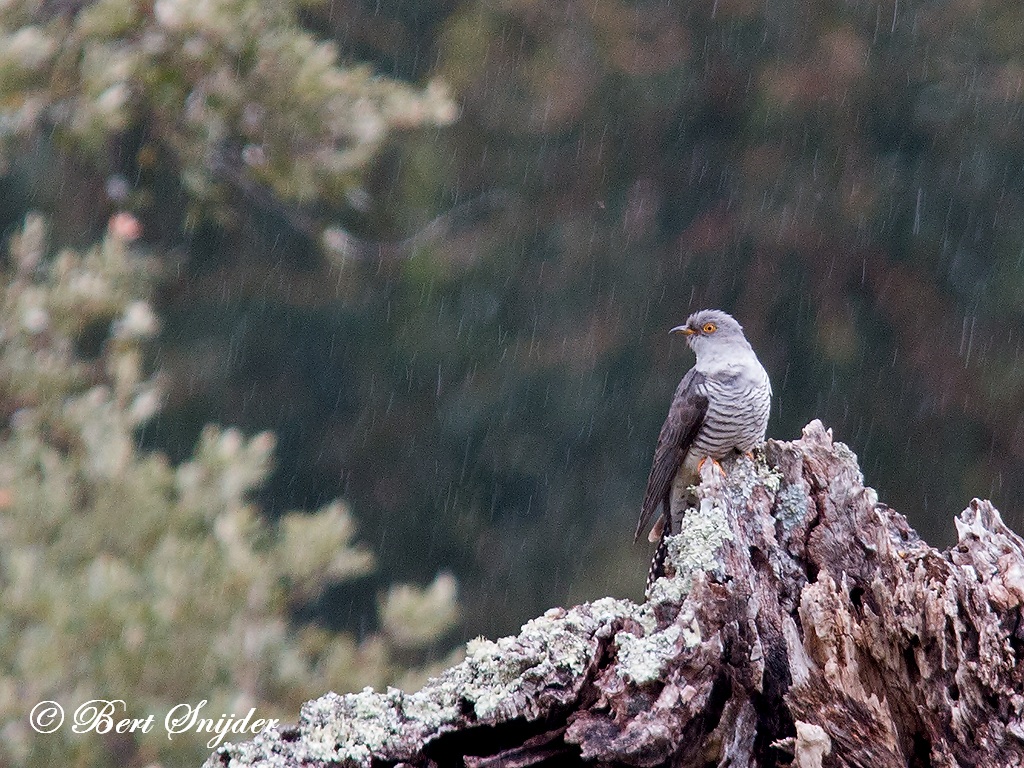
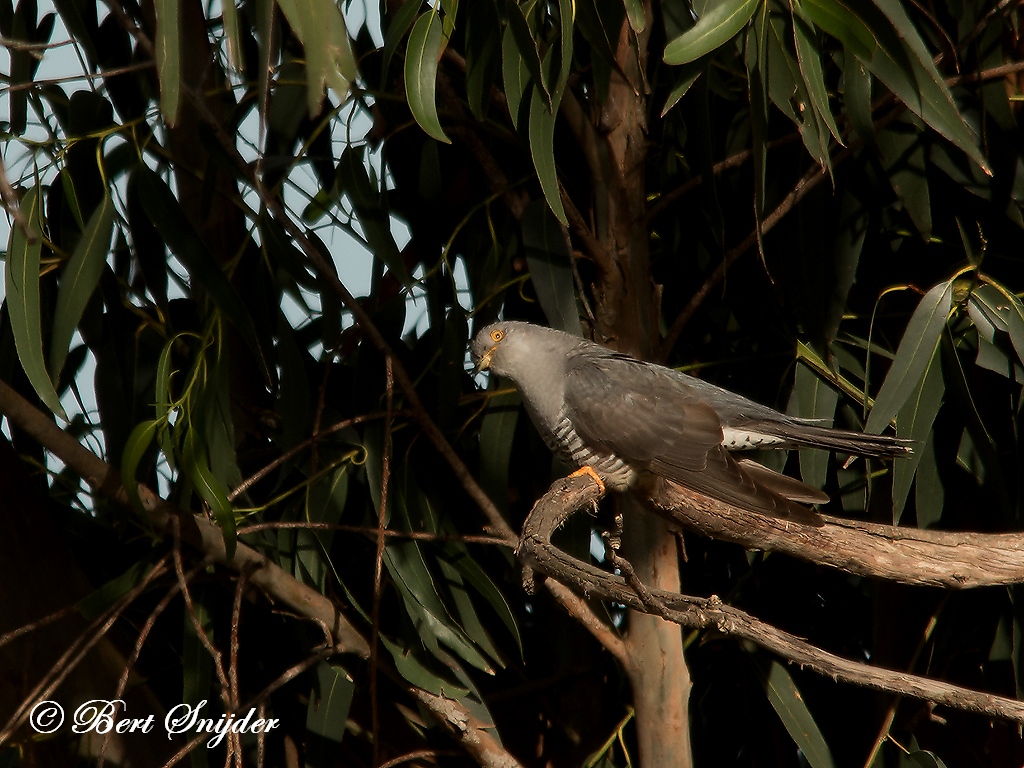
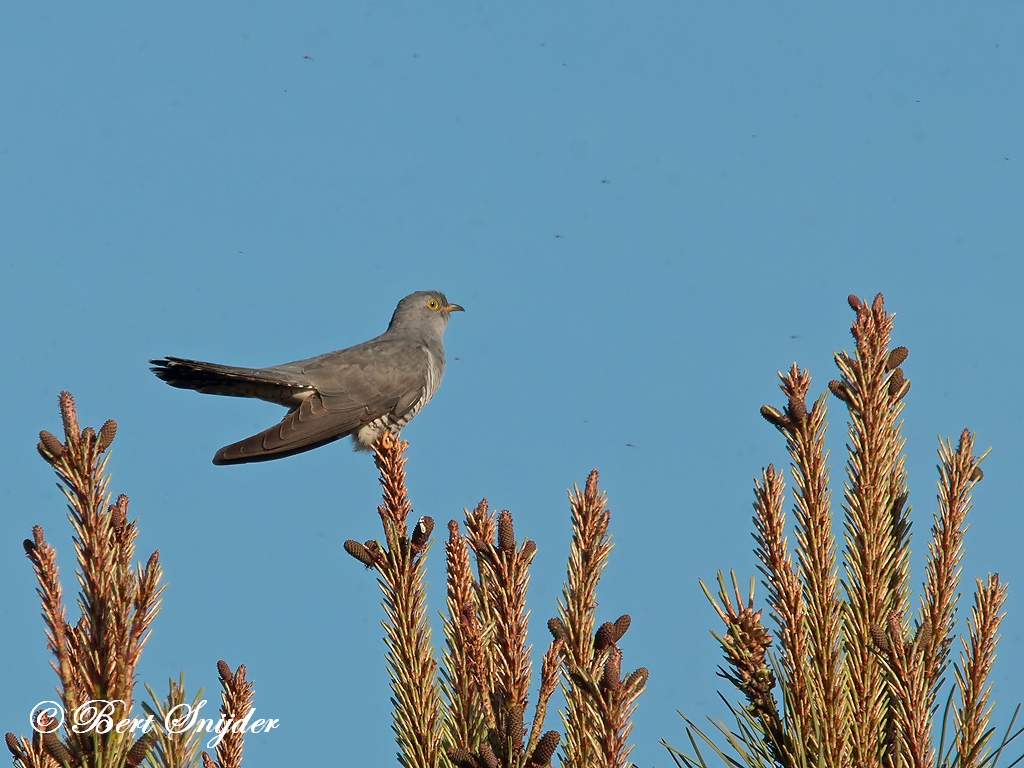
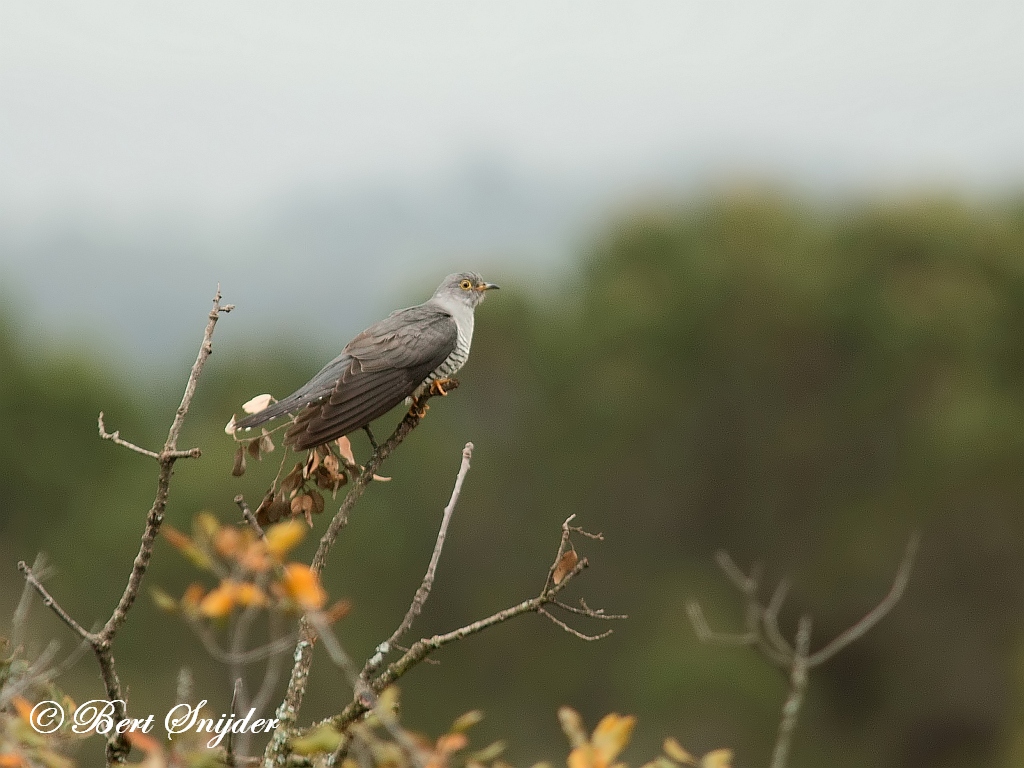



Other synonyms:
Afrikaans: Europese Koekoek
Araucanian: Maykoño
Mapundungun: Maykoño
Asturian: Cuquiellu
Belarusian: ziaziula
Bulgarian: obiknovena kukuvica
Breton: Ar goukoug Eurazia, koukoug
Catalan: Cucui, Cucut, Tórtola
Catalan (Balears): Cucui
Valencian: Tórtola
Czech: Kukacka obecná, kukaèka obecná
Welsh: Cethlydd, cog, Côg, Cwcw, Gwcw, Y gog
Danish: Gøg
German: Kuckuck
Emiliano-romagnolo: Tòrtura
English: Common Cuckoo, Common Northern Cuckoo, Cuckoo, Eurasian Cuckoo, European Cuckoo, Gray Cuckoo, Gray Eurasian Cuckoo, Gray European Cuckoo, Grey Cuckoo, Grey Eurasian Cuckoo, Grey European Cuckoo, Kamtschatkan Cuckoo, Khasia Hills Cuckoo
Esperanto: kukolo, kukulo
Spanish: Cuclillo Europeo, Cuco, Cuco Común, Cuco Europeo
Estonian: Kägu
Basque: Cucut, kuku, Kukua
Finnish: Käki
Faroese: geykur
French: coucou, Coucou d’Europe, Coucou gris
Friulian: cuc, cucuc, Tortorele
Frisian: koekoek
Irish: cuach, cuco
Gaelic: Cuach, Cuthag
Galician: Cuco, Cucut, Rula Común
Guarani: Jeruti
Manx: cooag
Croatian: Kukavica
Hungarian: Kakukk
Indonesian: Kangkok Erasia
Icelandic: Gaukur
Italian: Cuculo, Cuculo eurasiatico, Turtureina
Reggiano: Turtureina
Japanese: gappou-dori, Kakko, kakkou, kakkou-dori, kanko-dori
Cornish: Cok, Durenn, kog, koukou
Kwangali: Mukuku
Latin: Cuculus canorus
Ladino: cuch
Latvian: dzeguze
Macedonian: kukavica
Moldavian: Turturica
Maltese: daqquqa ka?la
Dutch: Koekoek
Norwegian: Gjøk
Napoletano-calabrese: Turtura
Occitan: coguol, Tortora
Polish: kukulka
Portuguese: cuco, cuco canoro, Cuco-canoro
Romansh: cucu, Turturella
Romanian: chuhuriashka, chuhuriezo kukuriashka, cuc, kukuriezo
Russian: obyknovennaja kukuška, Obyknovennaya Kukushka
Sardinian: Cuccheddu, Cucu, cucuevvai, Cucui, cucu-i, cucumarei, Cucuperra, Cucuperrai, cucuperra-i, Paccheddu, pacheddu, puzone de ‘ide
Scots: cuach, Cuthag
Northern Sami: giehka
Slovenian: kukavica, navadna kukavica
Somali: Ceelaljoog
Albanian: qyqja
Serbian: kukavica, obicna kukavica
Swedish: Gök
Swahili: Kekeo wa Ulaya
Turkmen: guguk
Turkish: Guguk
Ukrainian: zozulja
Vietnamese: Cu cu
Sorbian, Lower: kukawa, Tujawka
Sorbian, Upper: kokula, Tujawka
Travel Birdwatching Holiday Alentejo, Vacation Portugal for birders to see birds on your trip.